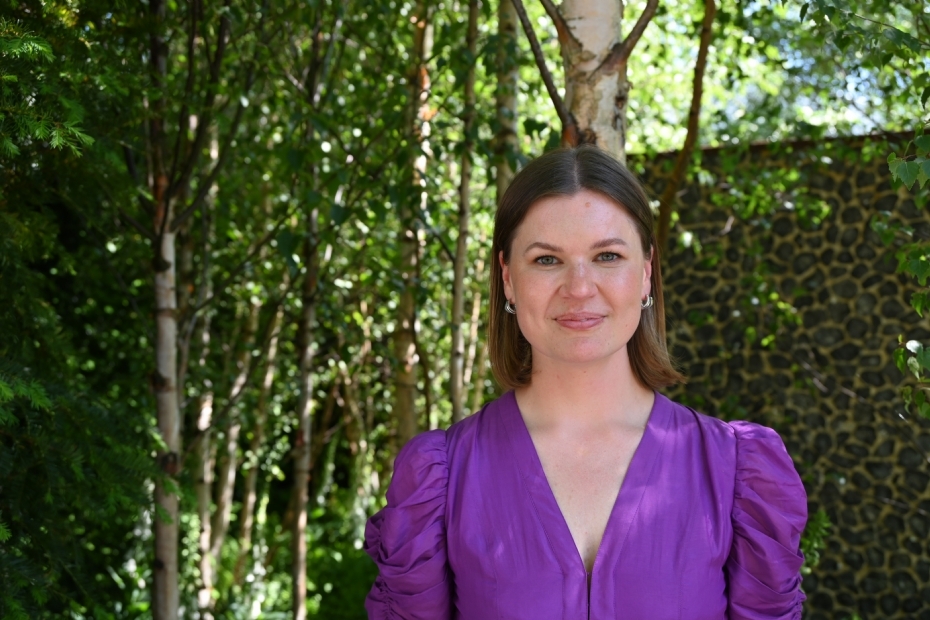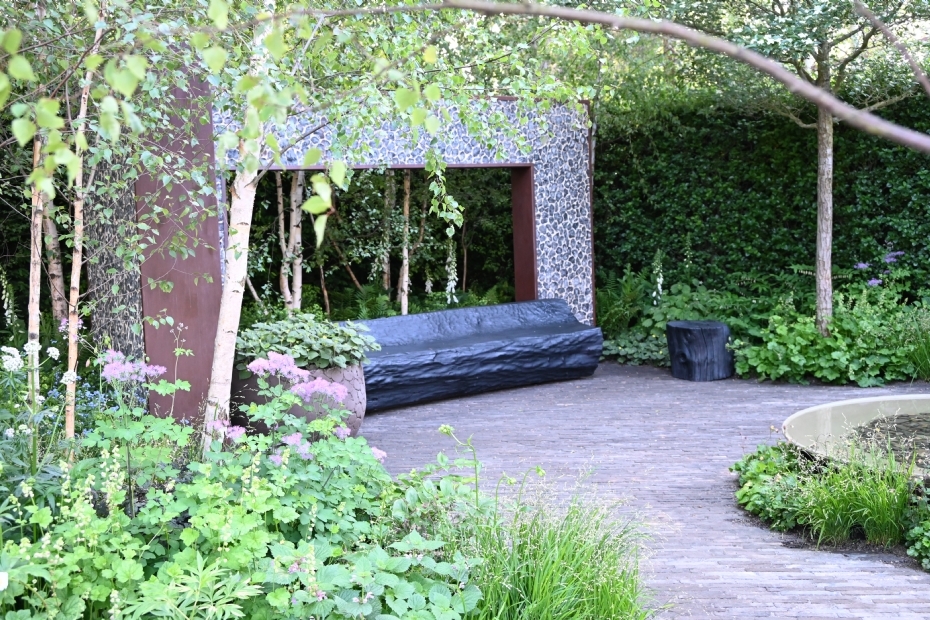'Forest Bathing Garden' takes top prize at Chelsea Flower Show 2024 |
|
|
|
|
 |
| 122 sec |
Debut designer Ula Maria wins Best in Show with her Forest Bathing Garden.
Ula Maria's debut at RHS Chelsea won Best in Show. The Forest Bathing Garden, inspired by the ancient Japanese practice of Shinrin-yoku, which means 'forest bathing', aims to show how an accessible garden can provide a sanctuary for those affected by the muscle disease muscular dystrophy.
Maria was previously named RHS Young Designer of the Year at the RHS Flower Show Tatton Park in 2017, which helped launch her career in garden design. Upon receiving the award, Maria said: 'It's incredible, I can't believe it, it's amazing. I'm so proud!'
 | | Ula Maria, with what may well be the view of her favourite spot in the garden behind her. |
|
|
Forest Bathing
The planting design is inspired by a birch woodland, with more than 40 trees surrounding the garden to create a forest-like atmosphere. The birch trees are underplanted in the style of a woodland edge, ranging from deep, shaded corners to more open, sunlit glades. The tree species used include Betula pendula, Betula albosinensis 'Fascination', Alnus glutinosa, and Crataegus x lavallei 'Carrierei'.
Planting
Most of the plants were chosen for their foliage, creating a green, textural carpet with occasional bursts of colour. A key weaving plant is Melica altissima 'Alba'. Maria notes: 'It's a perfect plant for creating continuity between the sunny and shaded areas of the garden.' Other notable species include Geranium sylvaticum 'Mayflower' and wild strawberry Fragaria vesca. Also striking are various types of iris: Iris sibirica 'Perry's Blue', Iris sibirica 'Dreaming Yellow', Iris sibirica 'Peacock Paprikash', Iris sibirica 'Persimon', and Iris sibirica 'Silver Edge'.
 | | The bench has also been crafted using a traditional Japanese technique known as Shou Sugi Ban: charred black wood, an age-old method of preservation. |
|
|
Wall of Muscle Cells
A large, randomly cleft flint wall was chosen for its striking texture and form (resembling muscle cells) which serves as a visual aid to explain what muscular dystrophy is and the devastating impact it can have on a person's muscles.
Bungaroosh: Historic 'Scrap Wall' Inspires Contemporary Insect Habitat
Another striking feature of the garden is the 'bungaroosh wall' made from recycled materials, inspired by the construction techniques of the British coastal town of Brighton in the 18th and late 19th centuries. Traditionally, bungaroosh was composed mainly of lime, gravel, coarse sand, and flint, often mixed with broken bricks, fragments of stone, and other construction debris sometimes even pieces of wood. In essence, it was built from leftover building materials. This concept of reuse is echoed elsewhere in the garden, notably in the insect wall and in the ornamental paving, which is a colourful mix of tiles, clay pavers, and semi-paved surfaces. According to Ula Maria, over 75% of the garden consists of green space. However, in contrast to many other show gardens at Chelsea this year, this design features a relatively high proportion of hardscape. This is a deliberate choice to ensure the garden remains inclusive and fully accessible for wheelchair users.
|
|
The reuse of leftover materials is reflected in various aspects of the design.
| |
|
Water
No garden at the Chelsea Flower Show is complete without a water element (except perhaps a few of the 'All About Plants' gardens located indoors in the pavilion). The Forest Bathing Garden is no exception, with water playing a central and unifying role. A planted, soft-edged channel runs through the middle of the garden, designed to capture and slow down the flow of any surface water runoff.
|
|
Combined with flawless planting to create an innovative, artistic, and precisely executed garden, it stands out as a clear winner.
| |
|
Judges' Verdict
RHS Show Garden Judging Chair Liz Nicholson said: 'Ula's design is a beautiful slice of woodland edge, brought into the heart of the RHS Chelsea showground. It is immersive, relaxing, and calming. The use of flint (an incredibly challenging material to work with) is remarkable, potentially creating the largest insect habitat I've ever seen. Combined with flawless planting to create an innovative, artistic, and precise garden, it's a clear winner.'
| LOG IN
with your email address to respond.
|
|
|
| There are no comments yet. |
Tip the editors
|